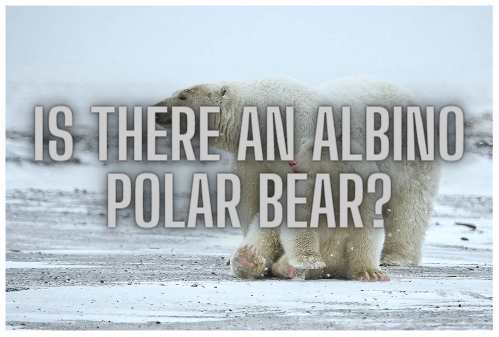Albino animals have always captivated our imagination with their striking appearance and unique characteristics. In the realm of polar bears (Ursus maritimus), the world’s largest land predator, the presence of an albino individual adds an extra layer of intrigue. In this article, we will explore the phenomenon of albino polar bears, their distinctive features, and the challenges they face in their Arctic habitat.
Understanding Albinism
Albinism is a genetic condition characterized by the absence or reduction of melanin, the pigment responsible for coloration in the skin, hair, and eyes. Albino animals typically have white or pale fur, pinkish or light-colored eyes, and a lack of pigmentation in their skin.
The Rarity of Albino Polar Bears
Albino polar bears are exceptionally rare. The occurrence of albinism in polar bears is estimated to be less than 1 in 10,000 individuals. As a result, encountering an albino polar bear in the wild is an extremely rare and awe-inspiring event.
Physical Characteristics of Albino Polar Bears
Albino polar bears possess distinct physical features that set them apart from their normally pigmented counterparts. Their fur is pure white, lacking the typical creamy-yellow hue seen in non-albino polar bears. Their eyes appear pink or light blue due to the absence of pigmentation in the iris, and their skin is pale, often with a pinkish tone. These unique characteristics make albino polar bears visually striking and distinguishable from the rest of the population.
Ecological Challenges
The life of an albino polar bear presents several challenges in their Arctic habitat. The white fur, which provides camouflage for regular polar bears against the snowy background, becomes a disadvantage for albino individuals. Their lack of pigmentation makes them more visible to potential prey and predators, potentially affecting their hunting success and survival.
Furthermore, albino polar bears might face additional health challenges. The absence of melanin in their eyes can make them more sensitive to bright light and susceptible to potential eye damage. Their lack of pigmentation also increases their vulnerability to harmful ultraviolet (UV) radiation from the sun, which could potentially affect their skin and overall health.
Conservation Considerations
Given their rarity and unique characteristics, albino polar bears hold a special place in our collective fascination with wildlife. Protecting their fragile population is crucial for preserving the genetic diversity of polar bears. Conservation efforts aimed at safeguarding the entire polar bear population, including albino individuals, involve mitigating the impacts of climate change, reducing anthropogenic threats, and preserving their Arctic habitat.
Final Thoughts
Albino polar bears offer a glimpse into the extraordinary diversity and resilience of the natural world. These rare and visually captivating creatures face ecological challenges due to their lack of pigmentation, which makes them more conspicuous in their Arctic environment. Understanding the biology and conservation considerations surrounding albino polar bears allows us to appreciate their beauty and emphasizes the importance of preserving the delicate balance of the Arctic ecosystem.

